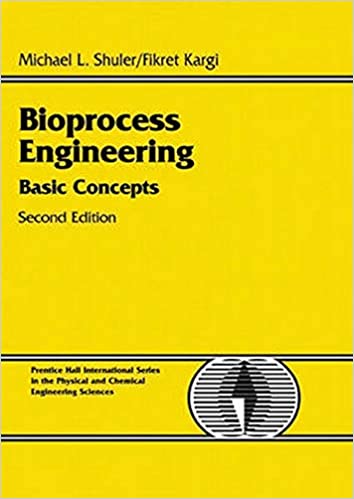
Bioprocess Engineering 2nd Edition by Fikret Kargi,Michael Shuler
Edition 2ISBN: 9780130819086
Bioprocess Engineering 2nd Edition by Fikret Kargi,Michael Shuler
Edition 2ISBN: 9780130819086 Exercise 4
Consider a chemostat. You wish to know the number of cells in the reactor and the fraction of
the cells that are viable (i.e., alive as determined by ability to divide).
a. Write an equation for viable cell number
 Assume that
Assume that

where
 = net specific replication rate,
= net specific replication rate,
 = maximum specific replication rate,
= maximum specific replication rate,
and
 = death rate.
= death rate.
 is the saturation parameter.
is the saturation parameter.
b. Derive an expression for the value of S at steady state.
c. Write the number balance in the chemostat on dead cells

d. Derive an expression for the fraction of the total population which are dead cells.
the cells that are viable (i.e., alive as determined by ability to divide).
a. Write an equation for viable cell number
 Assume that
Assume that
where
 = net specific replication rate,
= net specific replication rate, = maximum specific replication rate,
= maximum specific replication rate,and
 = death rate.
= death rate. is the saturation parameter.
is the saturation parameter. b. Derive an expression for the value of S at steady state.
c. Write the number balance in the chemostat on dead cells

d. Derive an expression for the fraction of the total population which are dead cells.
Explanation
Considering a chemostat:
a) An equation ...
Bioprocess Engineering 2nd Edition by Fikret Kargi,Michael Shuler
Why don’t you like this exercise?
Other Minimum 8 character and maximum 255 character
Character 255


